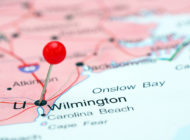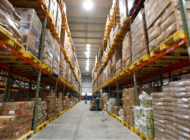While many companies look to North Carolina warehousing for its ideal mid-Atlantic location, recent enhancements to the state’s rail infrastructure have only sweetened the deal. You can take advantage of these new rail connections by partnering with a 3PL provider that operates warehouses with rail siding. Such a partnership makes the process of incorporating rail into your supply chain mix even quicker and more efficient.
What is rail siding?

Rail siding is a low-speed section of railroad track that’s set apart from the traditional tracks (i.e., a main line or branch line). It connects to a through track, or to other sidings at either end of the main line. These sections of track are typically made with lighter rails and designed to handle less traffic, lower speeds, and few (if any) signals.
In most cases, rail sidings are used for marshaling, stabling, storing, loading, and unloading vehicles. At a warehouse with rail sidings, your 3PL provider can use the sidings to bring freight right up to the warehouse to be loaded or unloaded.
Recent North Carolina rail enhancements
Coming online in October 2021, Carolina Connector from CSX is an intermodal rail terminal that sits on 330 acres in Rocky Mount, NC, a burgeoning manufacturing and logistics hub located in the Eastern part of the state. The terminal enables rail containers to be offloaded from freight cars arriving at the terminal and then loaded onto another train or truck for final distribution. The rail terminal offers direct connections to major Midwest hubs like Chicago and St. Louis.
The intermodal site can currently handle 1,250,000 containers a year. However, as the original 330-acre site has been built with the ability to expand to over 700 acres, the operation can grow relatively quickly to handle 2,500,000 containers a year.
According to the Rocky Mount Telegram, CSX is touting the Wilmington-Rocky Mount Express as the “fastest ship-to-rail service on the East Coast.” It enables cargo to reach the Midwest in five to seven days.
The CSX Connector’s capabilities have been boosted further by the recent addition of the Wilmington-Rocky Mount Express. The Express is a 140-mile rail line that extends from the Port of Wilmington to the CSX Connector terminal in Rocky Mount, enabling shippers to quickly move shipments to/from the Port via cost-effective rail.
Reasons to Use a Warehouse with Rail Siding
Having a warehouse with rail siding presents numerous benefits and allows you to develop a more flexible transportation process for your supply chain. It can also help you:
- Reduce transportation costs: One railcar transports the same volume as three-to-four OTR trucks, allowing you to decrease your dependence on much more expensive and harder-to-come-by trucking services.
- Reduce reliance on trucking: Rail utilization allows you sidestep capacity challenges and pricing fluctuations that are common within the trucking industry.
- Reduce Congestion: By utilizing rail transport, you can help alleviate road congestion caused by heavy truck traffic. This can result in smoother traffic flow and less time wasted in transit, improving overall supply chain efficiency.
- Enjoy greater safety and reliability. Rail transport is known for its reliability and safety. Rail sidings provide dedicated areas for loading and unloading goods, minimizing the risk of accidents and damage to shipments.
- Keep your cargo moving in adverse conditions: Railroads are far less impacted by weather than their trucking counterparts. They are also less likely to experience delays due to vehicle accidents or traffic jams.
- Minimize your company’s carbon footprint: Goods moved via rail create less environmental impact than those transported via truck. Because rail is about 3.5 times more fuel efficient than trucks, shippers can reduce fuel use and related carbon emissions.
- Go intermodal: You don’t need to choose between rail and trucking. Many companies embrace rail-truck intermodal transportation by using the more expensive trucks for shorter legs of the journey and cost-effective rail for the long stretch.
Lean on Kanban Logistics for Rail-Sided Warehousing on the East Coast
At Kanban Logistics in Eastern North Carolina, we have both rail siding and a transload yard at our Rocky Mount facility, which is part of our local network of warehouses totaling over 1.5 million square feet of space. This Rocky Mount facility is served by CSX rail and can support your movements into and out of the new CSX intermodal terminal. In fact, Kanban is recognized as a premier provider in CSX’s TransFLO program, which transloads commodities between rail cars and trucks in the Eastern U.S. and Canada.
Kanban’s capabilities include the following.
- Rail siding: Boxcars can be brought on rail siding to one of our warehouse’s four rail-siding doors. The products can then be unloaded directly into the warehouse.
- Transloading: Center-beam cars are brought on rail siding to our transload yard. Once in the yard, the products can be loaded onto flatbed trucks which can transport the product inside the warehouse via drive-through doors, or the trucks can head out straightaway and deliver the products to the destination. As for storage, there are some products that are suitable for storage in our 2-acre outdoor storage space, while most others will be brought inside the warehouse.
To learn more about Kanban’s ability to support your rail movements on the East Coast, contact us today.



